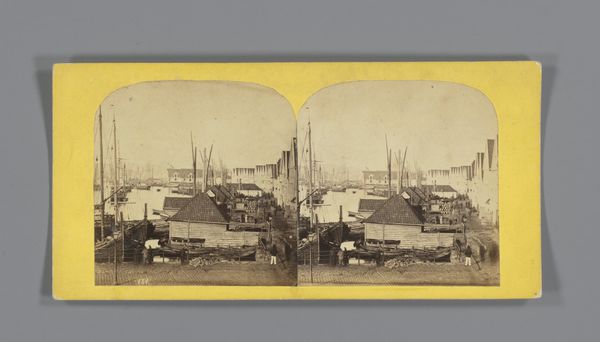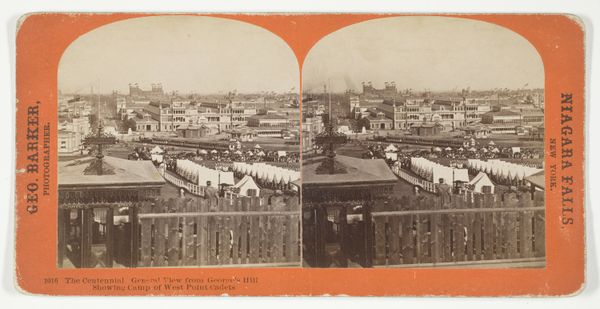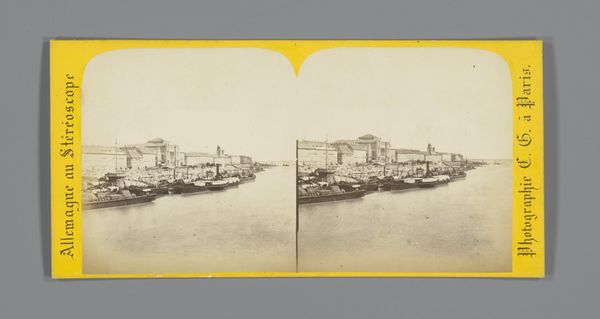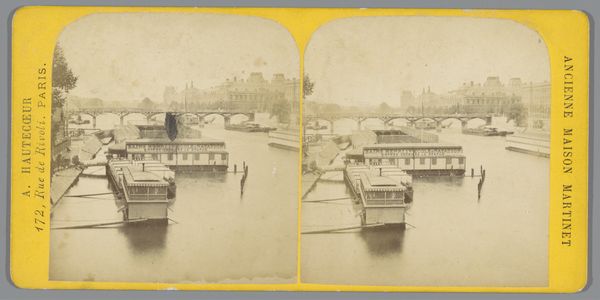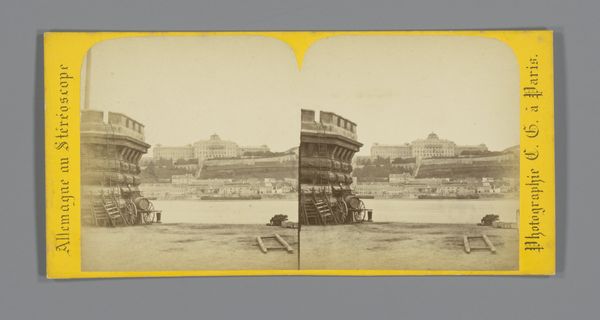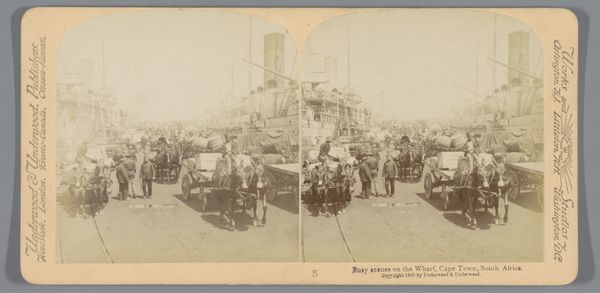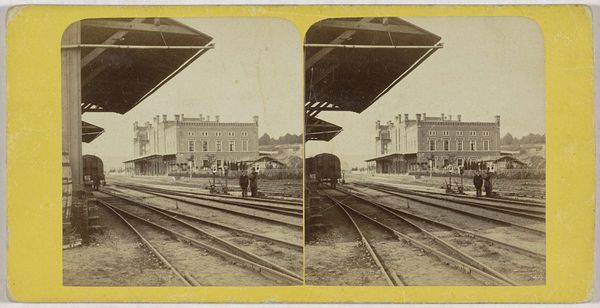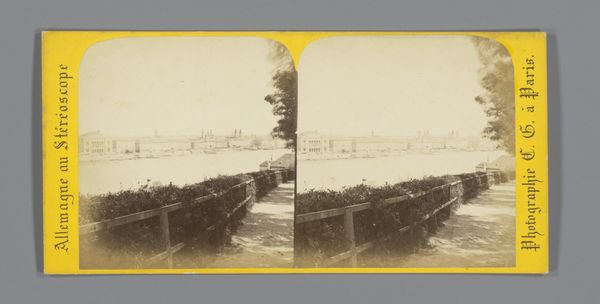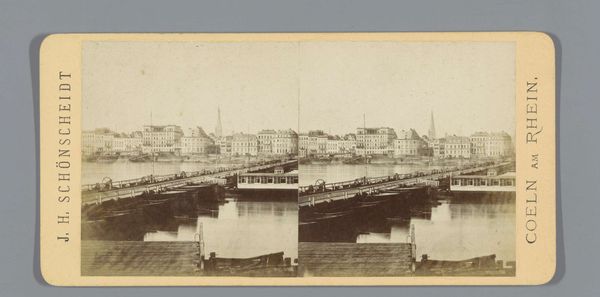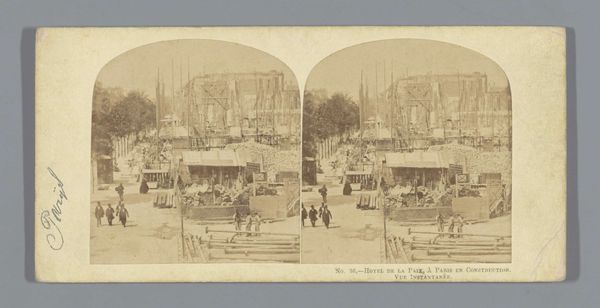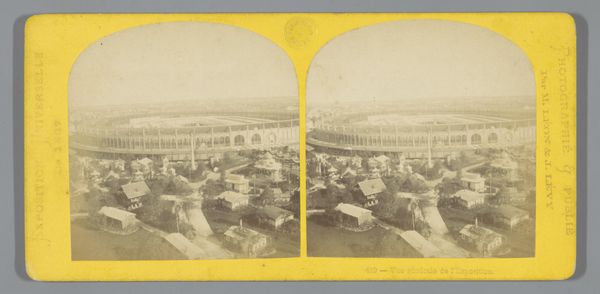
print, photography, gelatin-silver-print
#
portrait
#
16_19th-century
# print
#
street-photography
#
photography
#
orientalism
#
gelatin-silver-print
#
cityscape
Dimensions: height 108 mm, width 177 mm
Copyright: Rijks Museum: Open Domain
This is a stereograph, "Stoomboten in Montréal, Canada," made by William Notman, likely in the 1860s or 70s. The photographic process itself is critical to understanding this image. Before the advent of snapshots, photography required considerable infrastructure: bulky cameras, chemical processing, and skilled labor. Looking at this image, we see steamboats lined up at the wharf, symbols of industrial progress. The very act of capturing this scene involved a complex interplay of technology, labor, and commerce. Notman's studio was a business, employing numerous photographers and technicians, all contributing to the production of images like this one. The stereograph itself was a popular form of entertainment, offering a three-dimensional view of the world. Its mass production and distribution were tied to the growth of consumer culture. So, in examining this photograph, we're not just seeing a picture of steamboats, we're also witnessing the rise of industrial capitalism and its impact on art, labor, and leisure.
Comments
No comments
Be the first to comment and join the conversation on the ultimate creative platform.
